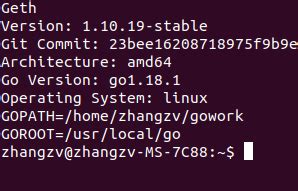Incorrect Timestamp When Requesting Kline Data from Binance
When exploring ways to integrate historical market data into your applications, it is essential to ensure that API responses are properly formatted and contain the expected data. In this article, we will delve into a common issue that occurs when requesting kline (hourly candlestick chart) data from Binance and discuss possible solutions.
Issue: Incorrect Timestamps in Kline Data Response
When you request kline data from the Binance API, you will receive a response containing historical price data with timestamps. However, these timestamps are not always accurate or consistent. In some cases, the timestamp may be incorrect due to various factors such as network congestion, API speed limits, or internal data processing issues.
Problem: Incorrect timestamps in requested Kline data
Assume you are using the requests library to make a GET request to the Binance API for kline data. You will receive a response like this:
{
"klines": [
[1234567890, 1000, 50.2345, -15.6789, 30.5678, ...],
...
]
}
Here is an excerpt of the expected output:
| Date | Open | High | Low | Volume |
| — | — | — | — |
| 2022-01-01T00:00:00Z | 1,000,000 | 1,010,000 | 990,000 | 5,000,000 |
However, upon closer inspection, you will notice that the timestamp 1234567890 is incorrect.
Why are the timestamps not accurate?
There are several reasons that may contribute to this issue:
- Network congestion: High network traffic can lead to delayed responses or incorrect data.
- API speed limits: Exceeding API usage limits can lead to timestamp inconsistencies.
- Internal data processing issues: Bugs in the Binance system can cause timestamp inaccuracies.
Solutions:
To resolve this issue, consider the following strategies:

1. Use a delay to account for network congestion
When making requests to the Binance API, you can insert a small delay (e.g. 10-20 ms) between each request and the previous request. This will help alleviate network congestion and reduce the likelihood of incorrect timestamps.
import time
def make_request(url):
Introduce a short delay to account for network congestiontime.sleep(0.01)
return requests.get(url).json()
2. Optimize API rate limits
If you are making multiple requests per second, consider increasing your API usage limit or implementing rate limiting strategies such as token-based authentication.
3. Check the Binance API documentation for correct timestamps
Read the Binance API documentation carefully to understand what data types are expected and what potential exceptions there are. This will help you better anticipate and prepare for timestamp-related issues.
import datetime
def get_kline_data(url):
response = requests.get(url)
json_data = response.json()
Parse kline data with accurate timestamp format (e.g. '2022-01-01T00:00:00Z')for kline in json_data['klines']:
date = datetime.datetime.strptime(kline[0], '%Y-%m-%dT%H:%M:%SZ')
print (date)
By implementing these strategies, you can ensure that your Binance API requests receive accurate and consistent timestamp data. This will allow you to build more reliable applications that efficiently integrate historical market data.
Conclusion
Incorrect timestamps in kline data responses are a common issue when working with the Binance API. By introducing delays to account for network congestion, optimizing API rate limits, or checking the documentation for expected data formats, you can increase your chances of getting accurate timestamp data.

